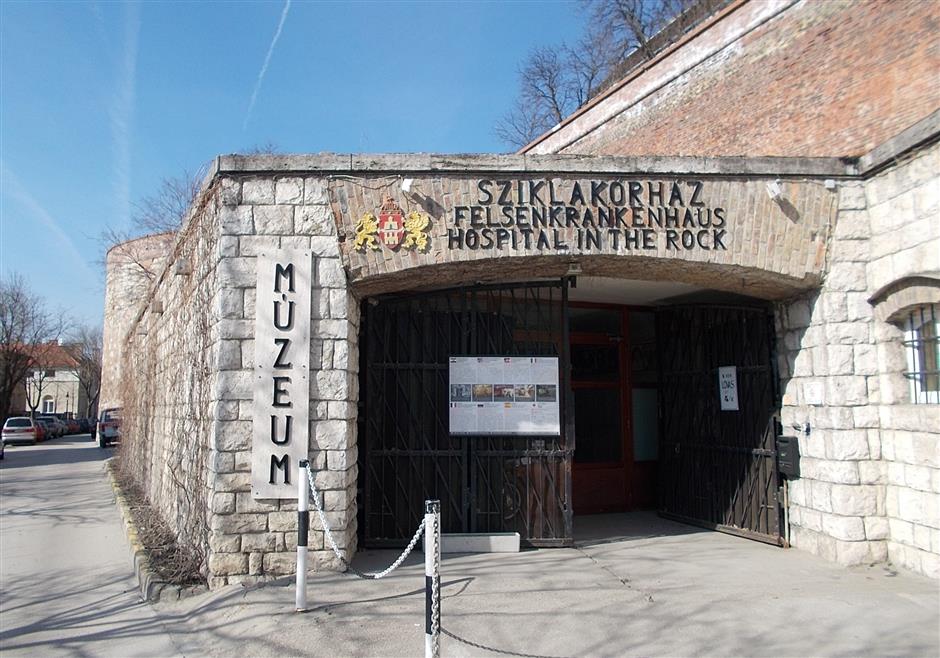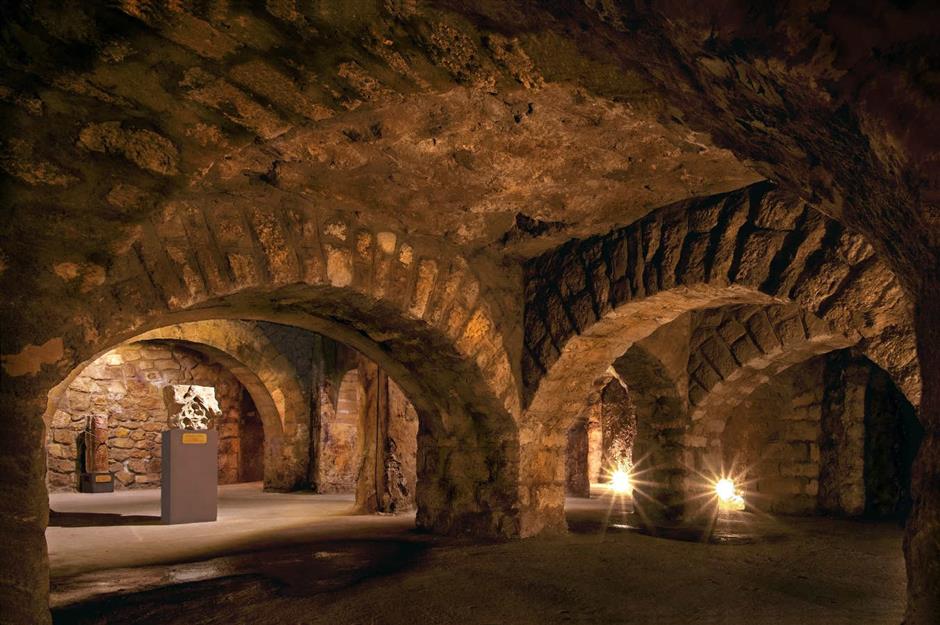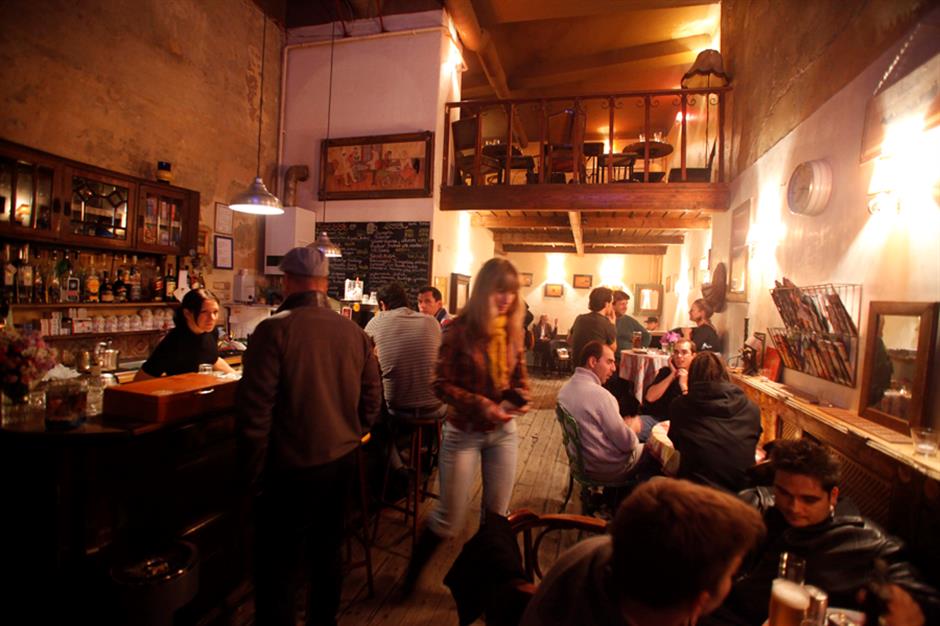Budapest's new hangouts give it a unique vibe
The Danube, the Bridge of Lánchíd and the Parliament
On my last visit to Budapest about 10 years ago, I remember exploring the rich layers of its complex history through the countless Baroque, neo-Gothic and Art Nouveau buildings and the famous Royal Palace, Danube riverbanks, and off course, the famed thermal baths.
One of the most charming of European cities, Budapest, the capital of Hungary, is a relatively new destination for Chinese tourists, especially for young travelers venturing out on their own. Much of the city was being restored, and I wasn't sure what to expect this time around.
It turned out to be a hipper and more intriguing Budapest which had a unique vibe from some of the newest additions in the city.
My curiosity was both satisfied and intrigued as I walked past the cobblestone streets up and down the Buda Hills, through the old city walls, amid the houses built as early as in the 14th century. Suddenly I found myself in front of a narrow iron staircase.
The twisting staircase, stretching down into darkness, seemed to indicate an unknown world distinct from the grandeur lobby with modern decorations and a huge chandelier above the ground.
It turned out to be a maze-like underground cavern, naturally created by the city’s famous thermal waters. They are hidden beneath the hills of Buda, part of the UNESCO World Heritage Site, and are the most-toured sites in the city, revealing a different Budapest from my last trip that had slowly begun to unfold itself.
Many historic buildings have been restored and put to new uses, while contemporary cultural venues have been commissioned. Its famous nightlife scene has become hipper as party organizers combined spa and party into “sparty,” while bars in ramshackle and even deserted houses sprouted and have become the new hot hubs.
New tourist sites like the underground caves have been developed while the classic cruise on the Danube to enjoy the two faces of Budapest still remain.

Hospital in the Rock is a new underground museum dedicated to World War II stories.

The Labyrinth, said to contain Count Dracula's imprisonment place, creates a damper, darker and more gruesome atmosphere.
Underground labyrinth
Like many first-time visitors, my previous trip started at the Castle Hill — a historical castle and palace complex that boasts different styles.
On this visit, I discovered a world hidden beneath it, filled with former wine cellars, Middle Age prisons, churches, Turkish harems and even a hospital built during World War II that was later turned into a secret nuclear bunker.
Underground Budapest is filled with a natural cave system that has existed since prehistoric times. It is connected through both natural and man-made tunnels and passages. Local people used them as storage or cellars since the Middle Ages.
Halfway up the Castle Hill, tourists queued outside what appeared to be a stone gate, carved with “Hospital in the Rock” — a new museum that opened in 2008.
Following through the damp tunnels is a former underground hospital that was built during World War II. It saved thousands of soldiers and civilians in wartime, especially during the 50-day-long siege of Budapest.
When war broke out in 1939, the caves were turned into air raid shelters and later expanded into a first-aid station for injured civilians and soldiers.
As the war intensified, the city saw the need for further expansion and built a hospital underground and used the caves as wards.
After the siege ended, the hospital was closed in 1945 and turned into a nuclear bunker guarded with gates in the late 1950s and early 1960s. The horror of the war and the Cold War are now conveyed through wax figures, air-raid siren and a radiation contamination room.
Another popular cave, the Labyrinth, opened in 2010. It is supposed to be the imprisonment spot of Vlad the Impaler, better known to the world as Count Dracula. The Wallachia Prince was captured at the king’s order in 1462, and was taken and imprisoned in Hungary.
The Labyrinth, said to contain the vampire’s imprisonment place, is also filled with costumed wax figures that create a damper, darker and more gruesome atmosphere than the Hospital in the Rock.
Accompanied by soundtrack, you will pass sections that are pitch dark. The Dracula’s Chamber contains an eerily lighted coffin.

Szimpla Kert is a popular "ruins bar" in Budapest.
Ruins bars and ‘sparty’
“Ruins bars” is the new buzzword now. The bars, which first emerged in the early 2000s, were set in decrepit houses. Now there are dozens such bars scattered across District Seven, packed with locals and tourists.
“These are real nice and chilled places. You can easily walk up to the clubs after catching up with friends over cheap drinks,” said Jonathan Coleman, who regularly visits from London. “These are quite unique places in Budapest. This area is one of my favorite, and I come here almost every time I visit the city.”
Most ruins bars have an outdoor area or even a garden. Some have intricate themes or artsy decorations, posters and music. Bar-hopping is the thing to do to discover their distinct personalities.
“Sparty” is another phrase that kept haunting me right from Budapest airport. A big screen at the airport showed crowds wearing bikini and swimming suits dancing to electro and trance music in the city’s famous bathhouses decked by laser lights and visual effects.

The historic Franz Liszt Academy of Music
Cultural venues restored and newly built
Budapest has restored some museums while some new ones are under construction. I was impressed by the historic Franz Liszt Academy of Music, the restored Pesti Vigado or Place for Merriment and the contemporary Palace of Arts or MUPA.
For Chinese, Budapest is closely associated with Empress Elisabeth of Austria from the film “Sissi” (1955). It was among the first foreign films to be shown on television. Franz Liszt is another, though we know little about his life as a music educator and the fact that he founded an academy of music himself — the first one at his home.
The artsy building itself and the delicate frescoes and statues of gods and musicians inside deserve a visit, not to mention the classrooms where Liszt taught, and the rare books and manuscripts donated by him. It also contains a concert hall.
Pesti Vigado along the riverbank was the city’s largest building for decades and the site where three cities Buda, Pest and Old Buda merged into Budapest on November 17, 1873.
It was severely damaged during World War II and was reconstructed amid debates on whether it should be restored and what it should be used for. After more than three decades, the building was ready in 2006. The Hungarian Academy of Arts gave it a new life in 2014.
While the fa?ade, frescoes, statues and interiors have been restored as per the original designs, it has been given a contemporary look on the fifth floor that contrasts sharply with the Romantic style of the original structure.
The modern space is used as an exhibition center for contemporary art. A terrace has also been added on the sixth floor that offers one of the best views of the river and Buda.
The Palace of Arts, on the other side, offers a contemporary view of the city’s cultural events. Opened in 2005, the stylish complex has performing halls as well as multifunctional spaces for events ranging from small concerts to receptions.

Opened in 2005, the Palace of Arts offers a contemporary view of Budapest's cultural events.

The Art Nouveau-style Gallert Thermal Bath was built between 1912 and 1918.

The Liberty Bridge















